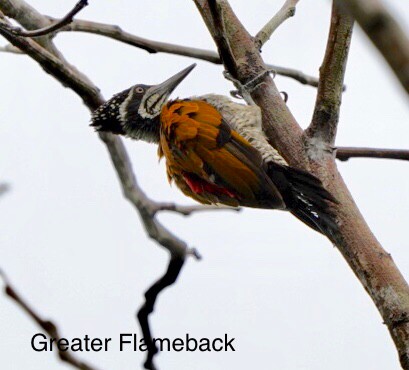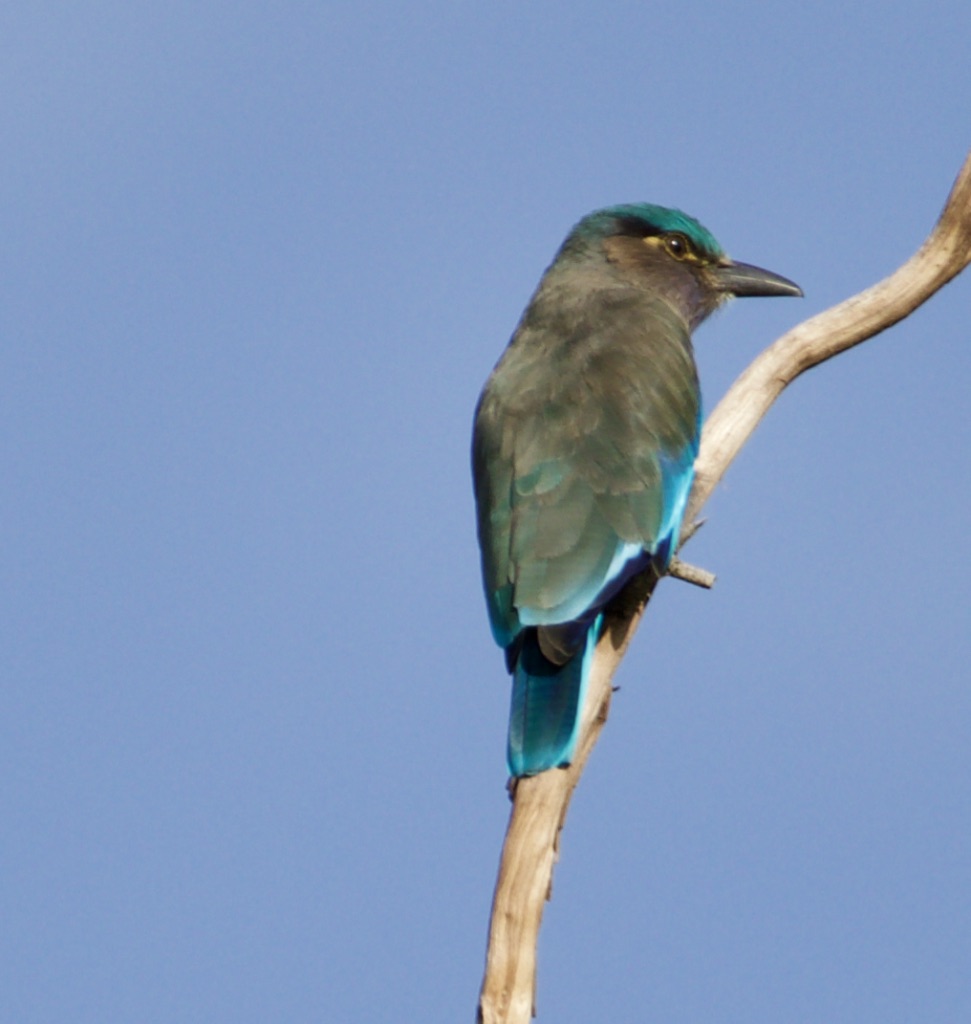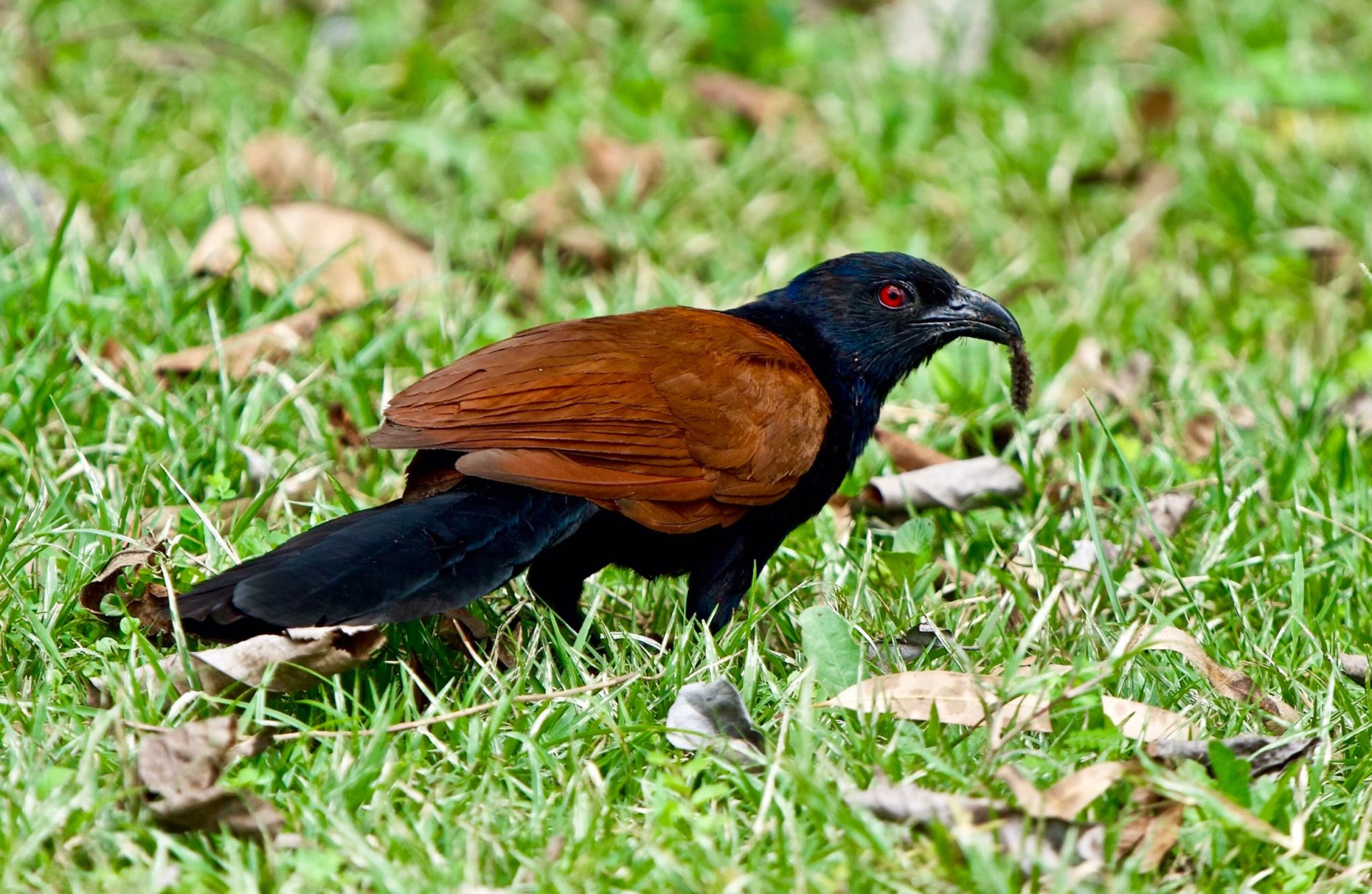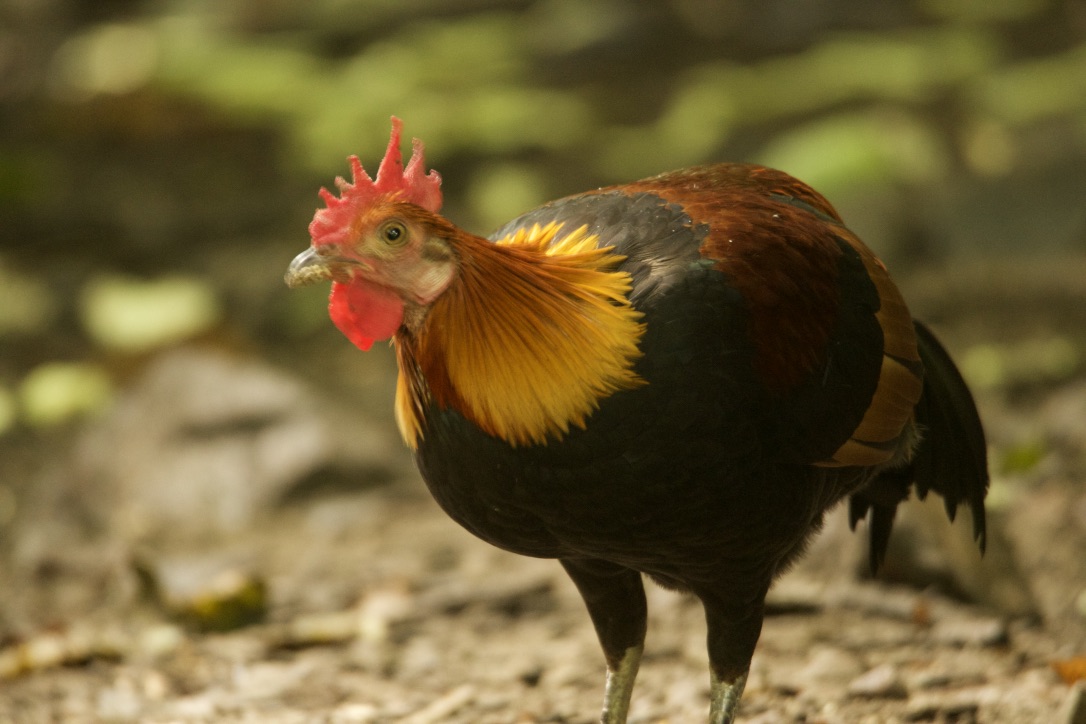Size: 30 – 33cm
Weight: 150 – 233g
Found: It occurs widely in the Indian subcontinent, eastwards to southern China, the Malay Peninsula, Sumatra, western and central Java and northeast Borneo. They are associated with a diversity of rather open forest habitat, such as found in the foothills of the Himalayas or in the Western Ghats; it also inhabits mangrove forest.
Description: The greater flameback is a large woodpecker, at 33 cm in length. It is of typical woodpecker shape, has an erect crest and a long neck. Coloration is highly variable between subspecies; it always has unmarked golden-yellow to dark brown back and wings. The rump is red and the tail is black. The underparts are white with dark markings (chevrons, stripes, or bands), or light brown. The head is whitish with a black pattern, or it is yellow, brown or red. The straight pointed bill is long (longer than the head) and – like the legs and four-toed zygodactyl feet (two toes pointing forward, two backward) – lead-grey. The eyes’ irides are whitish to yellow.
Diet: Like other woodpeckers, the greater flameback uses its bill to dig out food from trees and its zygodactyl feet and stiff tail to provide support against tree trunks. The long tongue can be darted forward to extract wood-boring arthropod prey; while mainly feeding on small invertebrates, greater flamebacks will also drink nectar.
Comment: They nest in tree holes, laying three or four white eggs.





